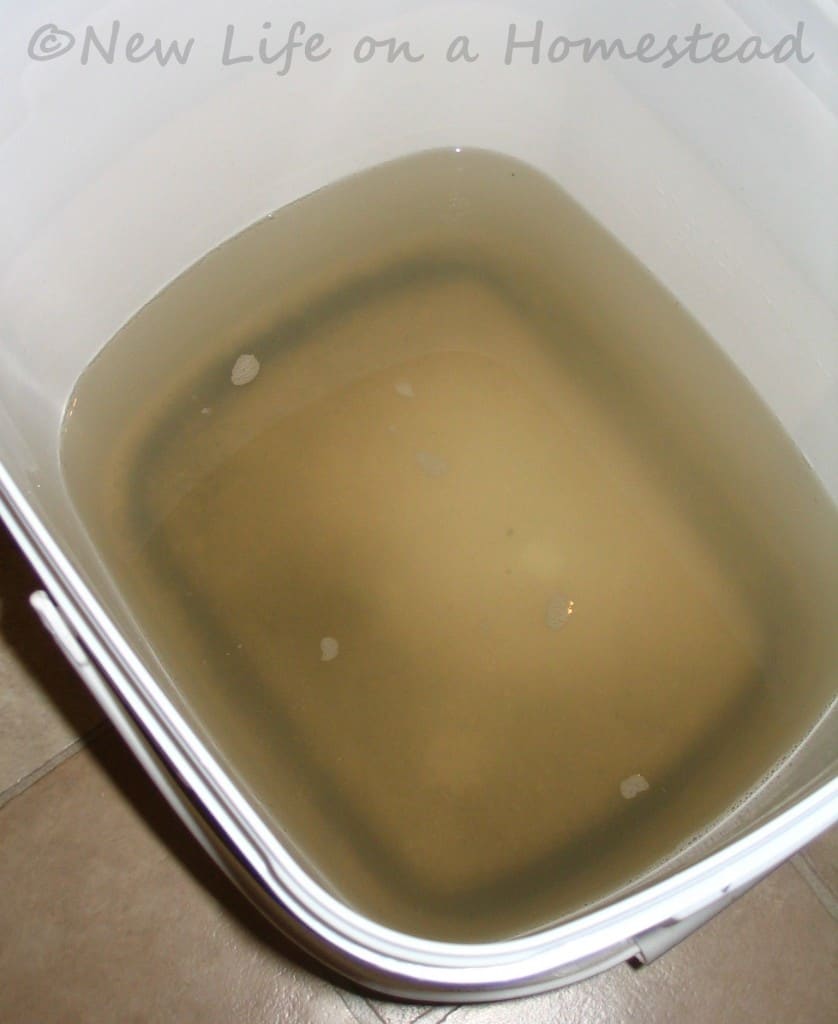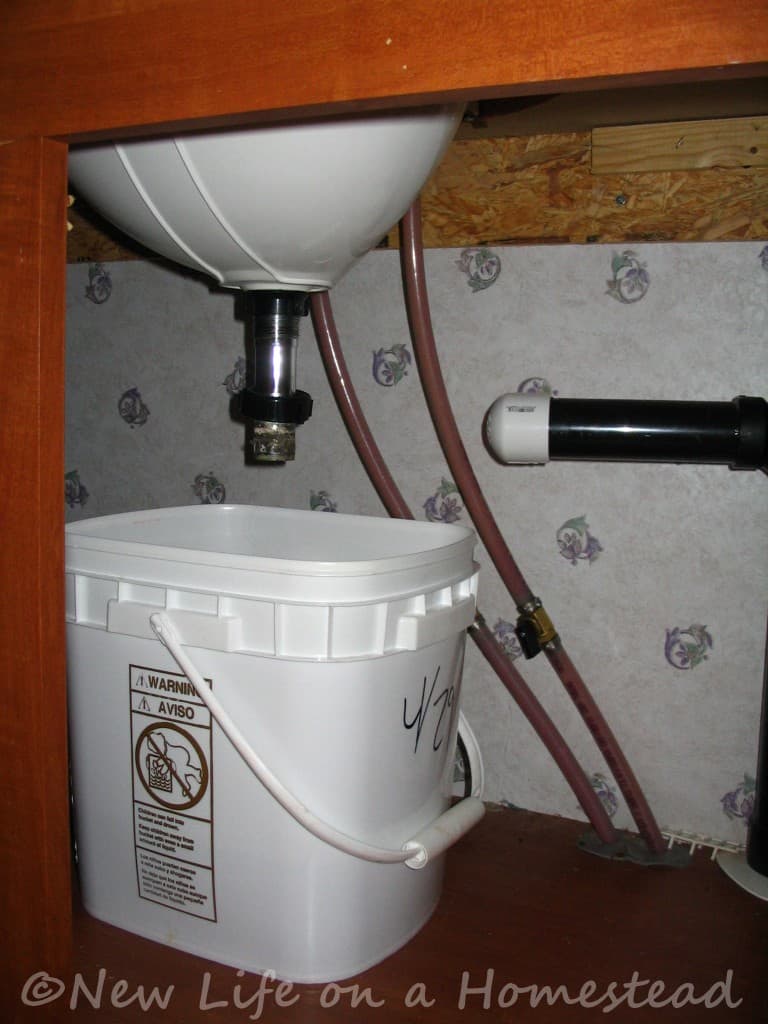Nowadays, there’s a great societal emphasis placed on personal water conservation. For those living in dry climates or rural areas where this resource is scarce- and especially for homesteaders- it’s critical to get as much “value” or use out of your water supply as possible.

Though to some folks the idea of reusing water is bizarre and bordering on taboo, the practice has been around for ages.
One strategy that is usually recommended when it comes to this endeavor is using gray water for various purposes around the home and property. But what is gray water, exactly?
Gray water is household wastewater that has not been tainted by urine or fecal matter. This kind of water can be saved from showers, baths, dishwashing, laundry, and other tasks to be reused for a variety of other non-potable purposes.
By reusing this gray water you can save money and resources, and help promote sustainability in and around your community.
But correct, safe usage of gray water means you’ll need good information, and collecting it in an efficient way usually requires some changes to your home plumbing setup.
But it isn’t hard in any case, and if you are ready to put gray water to use around your homestead you have come to the right place. This article will tell you everything you need to know and more.
What Separates Gray Water from other Wastewater?
Before we go any further, it’s essential to understand one essential fact that separates gray water from other household wastewater: gray water does not contain any human bodily waste!
Concerning the collection of gray water, as long as there isn’t any connection between your sink drains, tubs and other appliance drainpipes in the house with the main sewer or septic pipe what you’ll have is gray water, not black water.

Black water is wastewater that contains human waste, either urine or fecal matter. Black water drains and pipes are the toilets and the main sewer or septic pipe in your home.
Note that as soon as gray water enters any tank, pipe, drain, or vessel that handles black water, it is no longer considered gray water!
Compared to black water, gray water is comparatively safe to work with and can be utilized for non-potable water tasks, meaning not for human drinking and washing.
Gray water can, and indeed almost certainly does, contain germs or even chemicals but it is rarely as serious a health risk as black water. We will investigate the risks, collection, and uses of gray water in the following sections.
Caution: Gray Water Will Still Contain Germs
Before you run off to make use of your gray water, know that even relatively clean gray water is still considered contaminated for most human uses.
Gray water collected from doing your laundry will have soaps, detergents, and other chemicals in it, while gray water that is taken from a kitchen sink will contain more chemicals and soaps along with bits of food.
All of this means that gray water is never suitable for drinking or cooking, and it’s best to assume that all gray water sources have harmful chemicals or germs in them.
So, while it is certainly less gross than water containing sewage, you should still handle and use it with care to avoid contact with your eyes, mouth, nose, open wounds, and so forth.
What Can You Use Gray Water For?
Now, I know the preceding cautionary statement is probably enough to scare some people off of using gray water at all, but it shouldn’t.
Gray water is still safe and effective for all kinds of tasks in and around the home. The following short list represents just a few.
Washing Vehicles and Equipment
Keep your vehicles, boats and ATVs sparkling clean without wasting (and paying for) a ton of fresh water.
Using gray water in buckets or pumping it through a hose can help to scrub away mud and grime like usual while conserving the precious resource that is fresh water.
Outdoor Cleaning
When it comes to cleaning outdoor surfaces, natural or manmade, gray water is a great way to do it.
You can use gray water to wash and rinse the exterior of your home, rinse off a deck or patio furniture, or power wash tough surfaces like asphalt and concrete.
Gray water works fine in all instances, but there are a few things to keep in mind, though…
Certain cleaners and other chemicals present in gray water (depending on the source) may discolor some materials.
Also, large debris like bits of food or grease buildup risks clogging any spraying equipment or pumps you might depend on for such jobs.
But these minor issues aside, gray water is a great way to minimize fresh water consumption for mundane chores around your property.
Filling Toilets and Other Fixtures
If you ever find yourself in an emergency where your normal home water supply is out of action, using gray water to fill the bowl and tank of your toilet might save the day.
It will allow you to flush like normal (so long as the plumbing is intact and undamaged) without wasting any precious fresh water.
That’s a win-win for sure, and it will save you from having to use an “improvised toilet solution”.
Water Your Lawn
You don’t have to worry about gray water being too contaminated for use on your lawn or other plants.
In fact, some of its contaminants actually contain nutrients that plants need! If you have a large lawn or other areas to water, then simply place the (filtered) gray water into a portable or fixed container and use it with a hose as you would normally.
Otherwise, you can simply fill up a watering can and go to town. Gray water can save you money and help your lawn and landscape at the same time.
Use in the Garden
Reuse gray water in the garden for a bumper crop or even healthier plants. Just like when using it on the lawn and landscaping, gray water can help your plants thanks to its extra nutrients.
Just grab your watering can and use it as normal, or filter for use with a hose or pump and sprayer arrangement.
But do remember to always wash fruits or veggies prior to consumption: the contaminants in the gray water might help the produce grow, but they can still make you sick if you aren’t careful.
Water Your Decorative Plants
You should get the picture by now: as long as the gray water is free from truly harmful toxins, you can use it to water or mist any decorative indoor plants in and around your home.
Don’t Use Gray Water for These Things
Gray water can be surprisingly useful, but there are a few things it definitely should not be used for. See the following:
Drinking or Watering Animals
Drinking gray water is a definite no-go. It contains too many contaminants as described above and requires serious filtration and treatment before consumption by humans or animals.
Bathing
If you want to get truly clean, don’t use gray water.
Yes, “once used” bath water might be clean enough to wash with again assuming it only has soap in it, but gray water from any other source in your home is too gross for the task.
The presence of harsher chemicals, food particles, and bacteria is hardly hygienic!
Washing Pets or Livestock
Just like when it comes to bathing our own bodies, gray water contains substances that can harm your animals’ skin, fur, and hair. So, when it comes to bathing or just cooling off animals on a hot day, don’t use gray water.
How Do You Collect and Store Gray Water?
For many homesteaders, the toughest hurdle concerning the use of gray water is how to easily and efficiently capture and then store it for future re-use.
This does require a little bit of forethought and often some minor rearranging of the plumbing on a few drains, but it is well within the reach of your average DIY’er.
Also, I am happy to report that you won’t be forced to collect your gray water using bowls, buckets, and other messy transfer strategies, though that is an option.
For showers and sinks alike, consider getting 3-way diverters that direct wastewater from the drain to either the main sewer/septic line and also to a separate drain that leads to a purpose-installed tank.
You can also re-route the discharge line of your washing machine into this same tank to recoup even more gray water for use.
The tank mentioned above is your dedicated gray water storage tank. Such a tank can either be purchased online, or you can improvise by using a rain barrel or any other sturdy water storage container.
While it might seem complicated or challenging to set up such a system, the principles are quite simple, and the practical advantages of both water conservation and convenience are well worth any effort required.
Your gray water collection and holding system can be as simple or intricate as needed depending on your budget and your DIY skillset.
Some optional upgrades include storage tanks with overflow protection, powered pump assemblies that allow for normal use through exterior spigots, and more.
Tom has lived and worked on farms and homesteads from the Carolinas to Kentucky and beyond. He is passionate about helping people prepare for tough times by embracing lifestyles of self-sufficiency.
